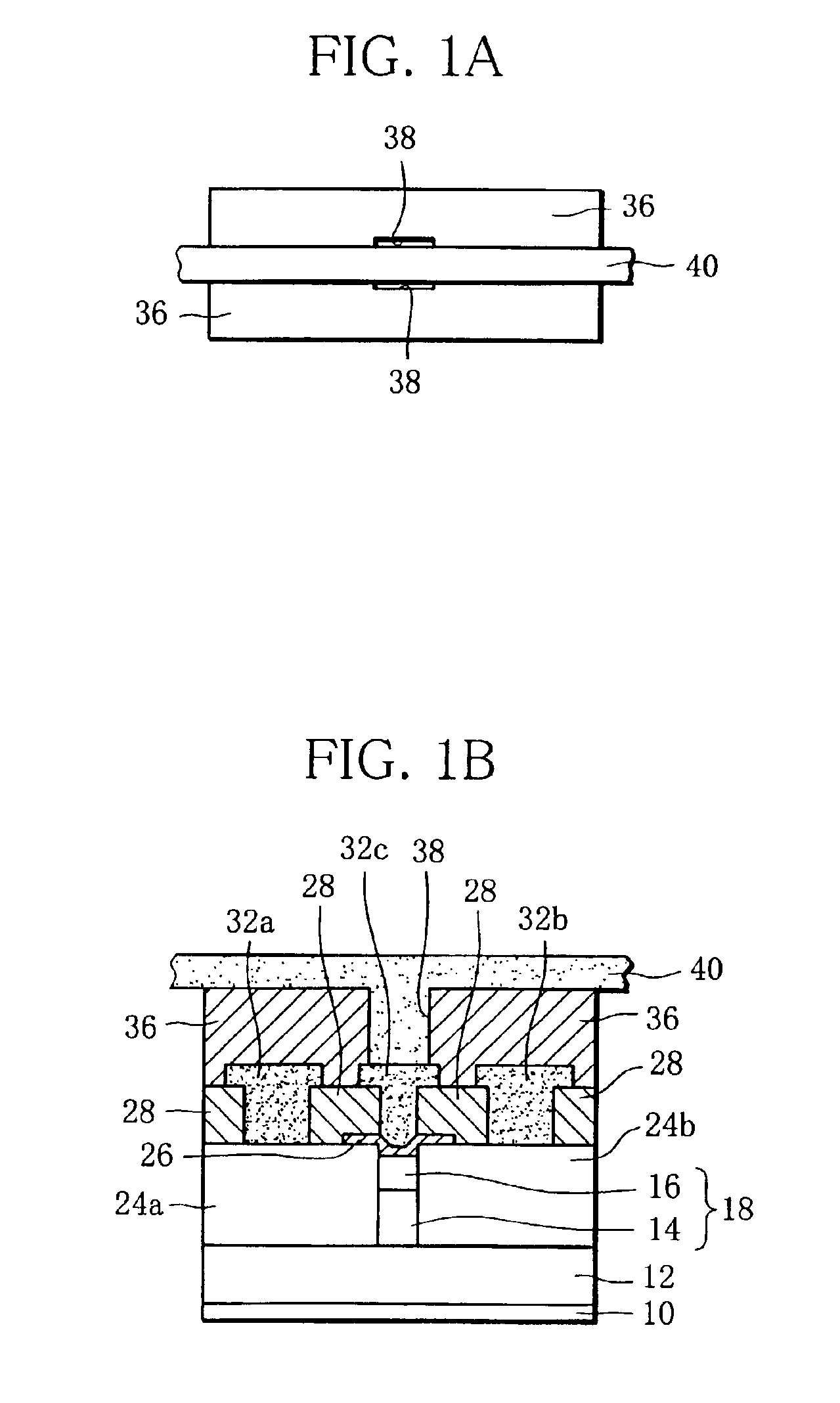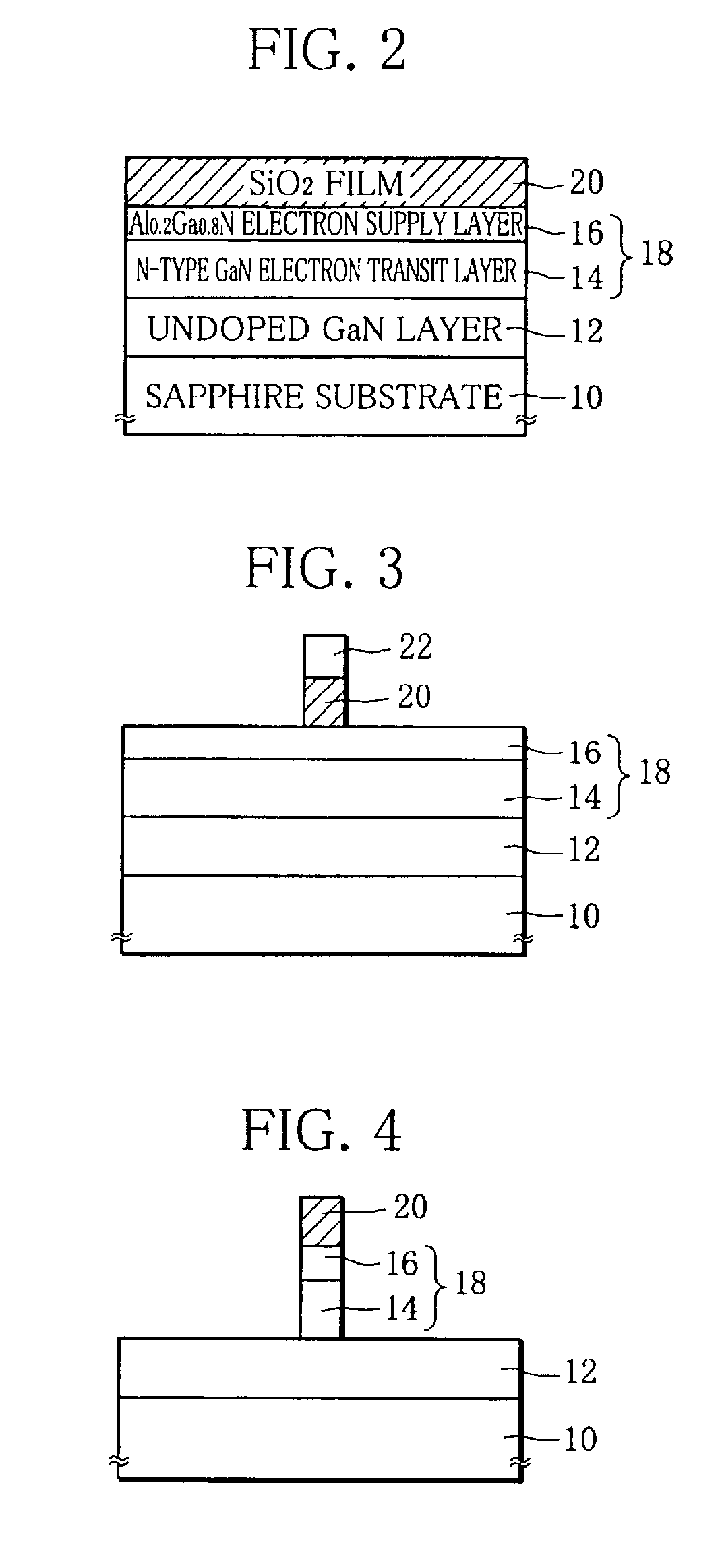Field effect transistor and manufacturing method therefor
a field effect transistor and manufacturing method technology, applied in the field of field effect transistors, can solve the problems of insufficient thickness of electrodes, inability to form electrodes with sufficient thickness, inability to make electrode resistance sufficiently small, etc., to achieve satisfactory power characteristics, small electrode resistance, and the effect of small electrode resistan
- Summary
- Abstract
- Description
- Claims
- Application Information
AI Technical Summary
Benefits of technology
Problems solved by technology
Method used
Image
Examples
example
[0145]With reference to FIGS. 25-36, an example of a method for manufacturing a GaN-based MISFET according to the second embodiment will be explained.
[0146]First, a series of crystal growth on a semi-insulating sapphire substrate 110 was done by means of a gas source molecular beam epitaxy (MBE) method using an ultra-high vacuum growth apparatus.
[0147]More specifically, a GaN buffer layer (not shown) of 50 nm thick was grown at a growth temperature of 640° C., using as raw material gases, gallium (Ga) at a partial pressure of 4×10−5 Pa and radical nitrogen (N) at a partial pressure of 4×10−4 Pa. Then, at a growth temperature of 850° C., an undoped GaN layer 112 of 1000 nm thick was grown using Ga and N at partial pressures of 1.33×10−3 Pa and 6.65×10−3 Pa, respectively.
[0148]In succession, an n-type GaN drain layer 114 of 200 nm thick with carrier concentration of 1×1019 cm−3 was grown at a growth temperature of 850° C., using Ga and N at partial pressures of 6.65×10−3 Pa and 6.65×1...
PUM
 Login to View More
Login to View More Abstract
Description
Claims
Application Information
 Login to View More
Login to View More - R&D
- Intellectual Property
- Life Sciences
- Materials
- Tech Scout
- Unparalleled Data Quality
- Higher Quality Content
- 60% Fewer Hallucinations
Browse by: Latest US Patents, China's latest patents, Technical Efficacy Thesaurus, Application Domain, Technology Topic, Popular Technical Reports.
© 2025 PatSnap. All rights reserved.Legal|Privacy policy|Modern Slavery Act Transparency Statement|Sitemap|About US| Contact US: help@patsnap.com



